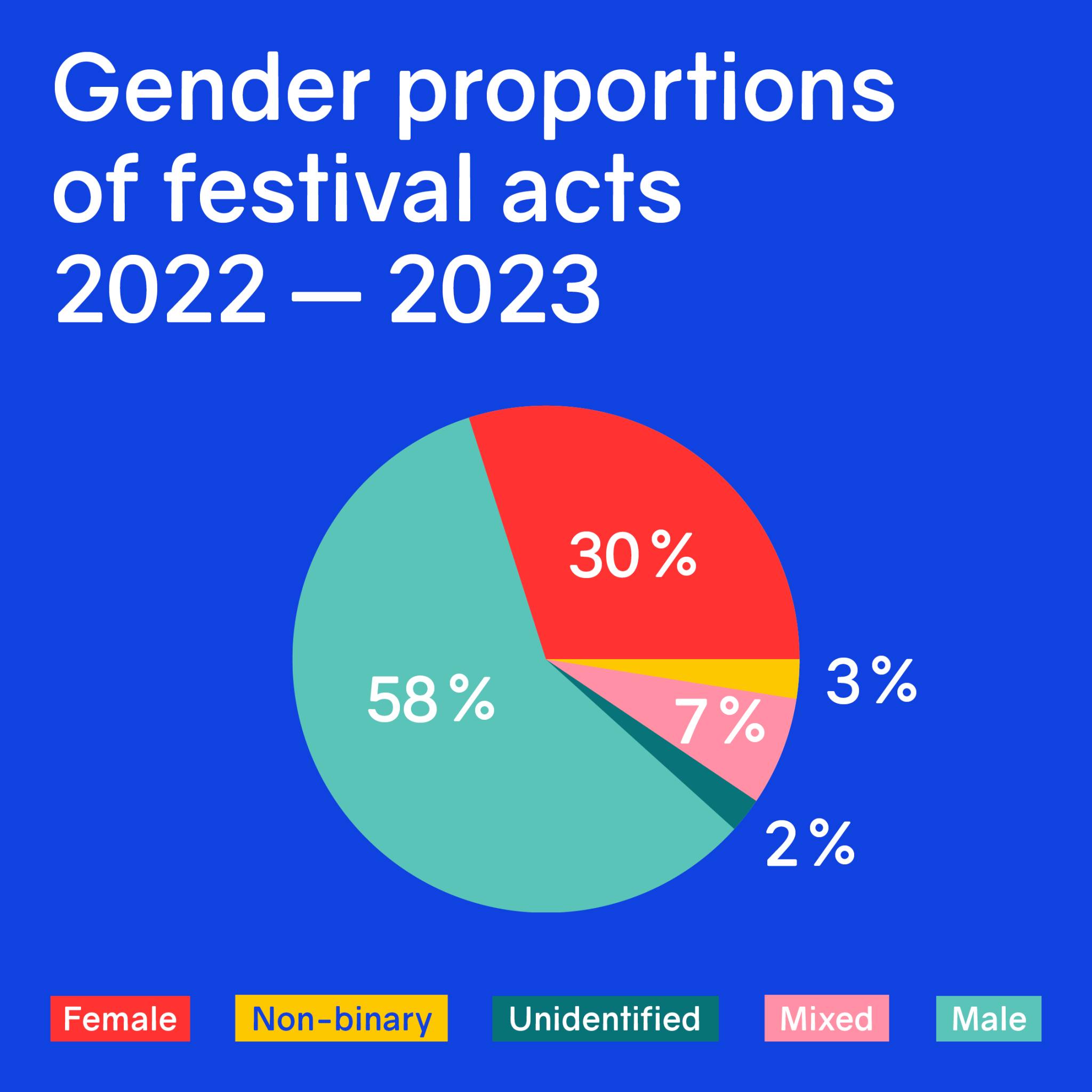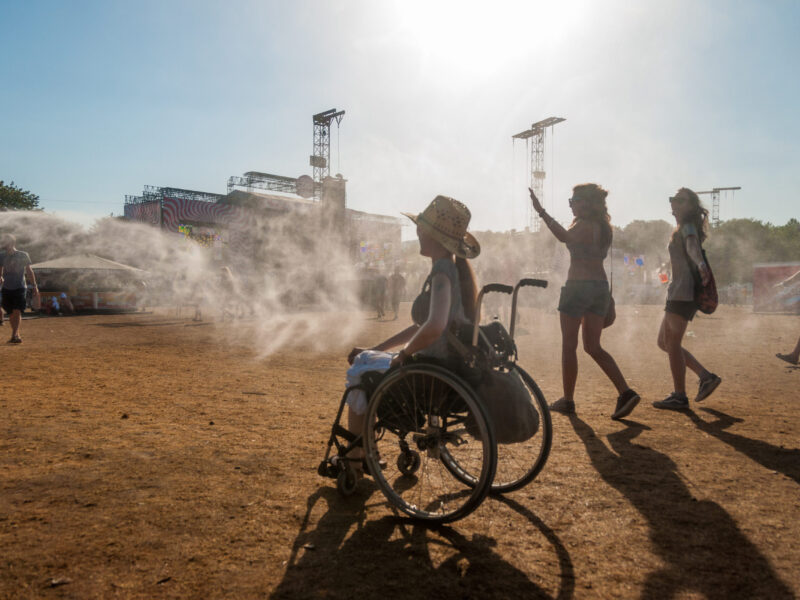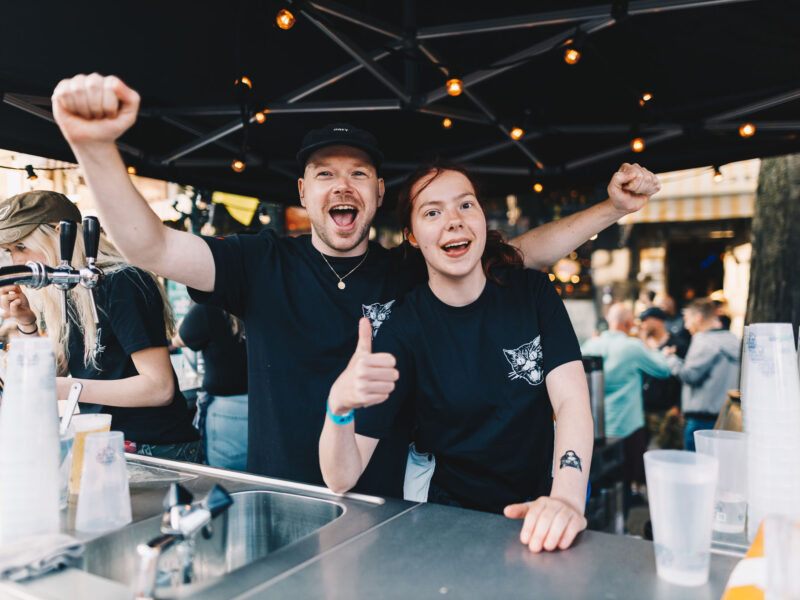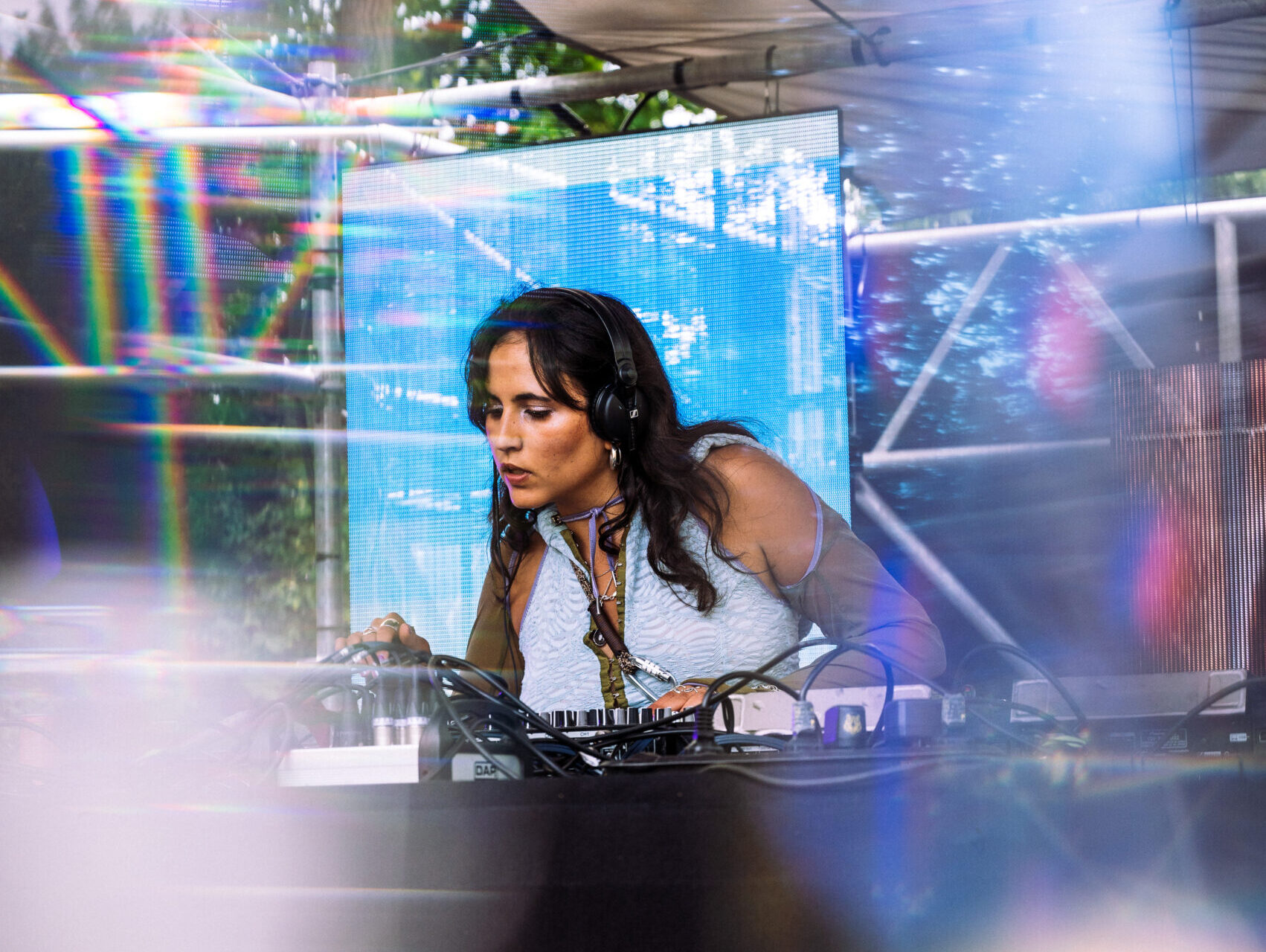
FACTS report: gender distribution of artists at electronic music festivals
Header photo via Angelina Nikolayeva.
The online database and network of women and nonbinary people in the music industry female:pressure has recently published their 2024 FACTS report. Read the full report via their website!
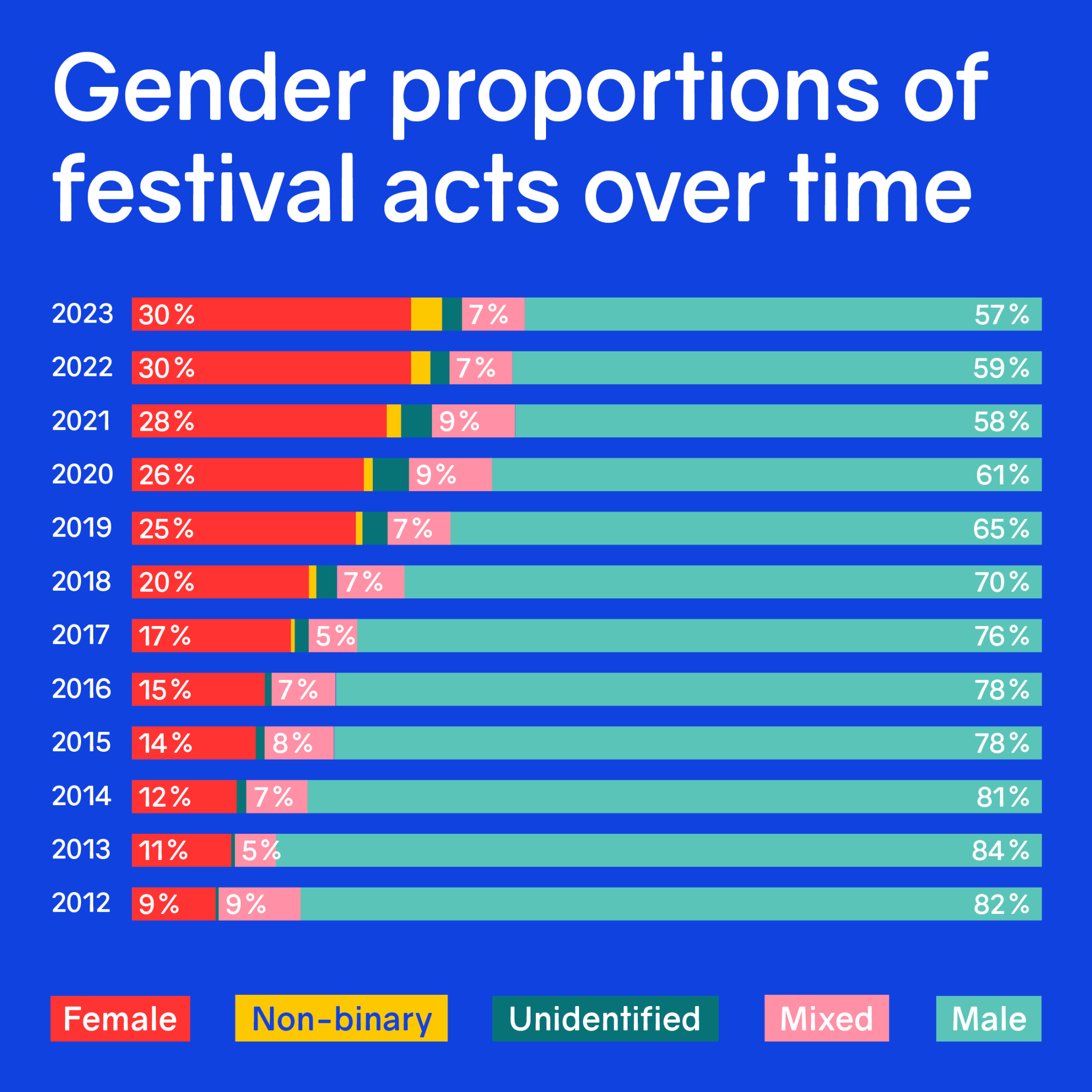
Background
“The female:pressure FACTS report has been a continuous project under- taken by volunteer members of the female:pressure network to quantify the gender distribution of artists per- forming at electronic music festivals worldwide. FACTS 2024 is the sixth edition of the report, which was first published in 2013, and updated in 2015, 2017, 2020, and 2022.”
Methods
“Data was provided by the female:pressure Trouble Makers, female:pressure members, and festival organizers. Gender proportions for each festival are assessed for female, male, non-binary [starting 2017], and mixed acts [group of two or more artists of different genders]. The number of acts are counted per slot of stage time. “Acts” include musical and visual artists or bands who appear on stage/on screen, as they are listed in the festival’s program.”
Results
“We collected data for 175 festival editions [of 110 unique festivals] that took place in 2022 and 2023. Adding this to the previous data, female:pressure has collected data for 1008 festival editions [281 unique festivals in total] from 2012 to 2023 from 50 countries. The proportion of female acts rose from 9.2% in 2012 to 29.8% in the current reporting period of 2022 to 2023. In 2022/23, 2.5% of all acts surveyed were non-binary and 6.9% were mixed in comparison to 58.4% male acts. Larger festivals tend to have lower proportions of female and non- binary acts. Publicly funded festivals and festivals with female artistic directors have higher proportions of female acts.”
Conclusion
“We see a slow but steady rise in female and non-binary acts in electronic music festivals over the past decade, comprising almost a third of all artists booked. However, there is also a continued trend of the largest festivals booking the fewest female and non- binary acts. Indeed, the smaller the festival the more gender diverse its line-up is likely to be. There is clearly still a significant imbalance in gender representation on electronic music festival stages today.”
